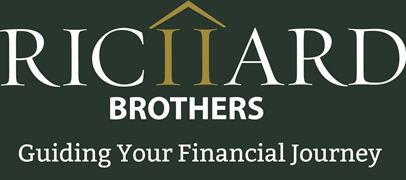 If you’re offering employee retirement benefits for the first time, a 401(k) plan isn’t your only option. Choosing an appropriate plan requires careful review of your current business structure, metrics, number of employees and cash flow.
If you’re offering employee retirement benefits for the first time, a 401(k) plan isn’t your only option. Choosing an appropriate plan requires careful review of your current business structure, metrics, number of employees and cash flow.When a company tries to take a shortcut and choose a plan without regard for the company’s size, structure and other relevant details, they often end up with a plan that experiences poor participation and offers little value to owners and employees.
SIMPLE IRAs vs. 401(k) Plans
Establishing a full 401(k) profit-sharing plan requires considerable administration, including annual reviews and compliance testing. If your company is just starting, for example, and has few participants or minimal cash flow, a SIMPLE IRA plan might be a better option.
“SIMPLE” stands for “Savings Incentive Match Plan for Employees.” This type of plan is ideal “as a start-up retirement savings plan for small employers not currently sponsoring a retirement plan,” according to the IRS. Employees and the company are able to contribute to IRAs set up for participants, without the cost and time required for full plan administration.
One drawback of the SIMPLE plan is that individuals won’t be able to defer as much income as they could with a 401(k) profit-sharing plan. For 2015, the maximum contribution is $12,500 for the SIMPLE IRA, compared to $18,000 for a 401(k). Also, the company’s matching contributions are always fully vested. At the same time, the amount that owners may set aside is not affected by whether employees participate.
As your company grows in size, revenue and profits, a traditional 401(k) plan is often more advantageous, in that it increases the amount of deferral allowable to participants and to the company, as plan sponsor. This could result in significant tax savings for the company’s owners and employees.
To maximize the amount of deferral under a 401(k) plan, you may choose a “safe harbor” plan provision. With this option, the company agrees to a minimum matching contribution as set by the Department of Labor and ERISA. This eliminates the need to limit the contributions of company owners and highly compensated employees based on overall plan participation.
How Long Does It Take To Switch To A 401(k)?
When you first start looking into changing your retirement benefits plan to a 401(k), it may seem like a daunting task. Perhaps you’re concerned about spending time on researching and choosing a new plan, or lost productivity as employees enroll and attend benefits meetings, and so on.
But the fact is, switching to a different retirement plan doesn’t require a long time frame. With an expert advisory team in place along with your internal committee, it typically takes 90-120 days to implement a formal plan change.
The process starts with a detailed census of your employee data. If an existing plan is in place, all of those documents need to be reviewed and considered. Next is a thorough review of all relevant data with a team of advisors. This team should include a retirement plan advisory firm, record keeper and administrator, your CPA and possibly an attorney specializing in ERISA law.
While taking shortcuts in choosing a plan may be tempting, thorough research and review is in the best interest of the plan sponsor and the participants. It helps ensure that the plan you ultimately choose aligns best with the needs of the company and its employees.
Not sure how to choose the right 401(k) plan? Request a free, 30-minute consultation with Richard Brothers and start maximizing your plan’s value.
Richard Brothers Financial Advisors


